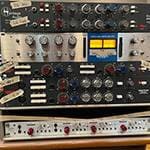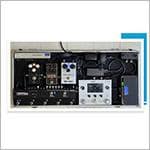Filterscape VA has a standard analog synth configuration, which is unusual for u-he company. This article mainly focuses on the common parts of analog synths, so the contents can be applied to other synths as well.
PWM
PWM stands for Pulse Width Modulation. This is an energy control using the duty ratio of a square wave (pulse wave) and is a general-purpose technology used in motor control and other applications. It is a classic function that has been used in synthesizers since the early days. The following video shows how it changes when observed on an oscilloscope. You can see that the width of the square wave is constantly changing. In practice, it is not always necessary to move it, but it is sometimes used with a specific duty ratio.
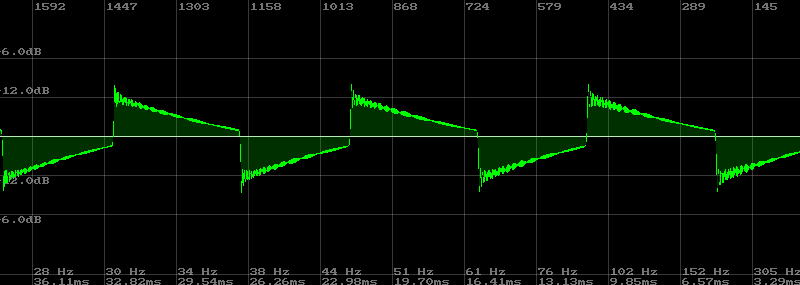
The duty ratio is derived by the following formula. Generally, 50% is called a square wave and the rest is called a pulse wave. You can tell the difference by listening to the sound because the overtone structure changes.

As shown in the figure below, a square wave of 50% consists of odd overtones, while a pulse wave has even overtones, making it an integer overtone. Therefore, the sound is different.

The way to achieve PWM with Filterscape VA is a little different. While normal synths have a duty ratio as a variation of the square wave or can be infinitely adjusted, Filterscape VA uses an inverted copy of the sawtooth wave, which controls the duty ratio with phase manipulation and synthesizes it. The specific procedure sets OSC to V Analog's sawtooth wave and INV to 0 to make it a square wave. The duty ratio is then determined by adjusting PHASE. In the setting below, the duty ratio is periodically changed by LFO.
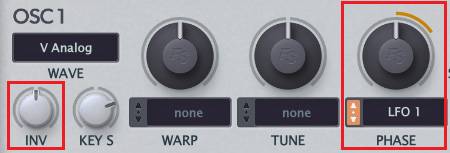
With this setting, a single note is sounded. You can see how the sound changes over time.
SYNC (Oscillator Synth)
The next is another classic synth function: oscillator sync. This function synchronizes the pitch of two oscillators, or forces them to be in pitch.
Below is how to SYNC using Filterscape VA. It works by turning the SYNC button ON. When the TUNE (pitch) of OSC2 is raised, it is forced to match the pitch of OSC1. As you can see in the waveform below, a rather unique overtone is generated to forcefully correct the pitch. This is the reason for using oscillator sync. The pitch is matched to OSC1, but only equal octaves, the waveform is cleanly aligned so that the pitch is also octave-related, and the tone is a straightforward sawtooth wave.

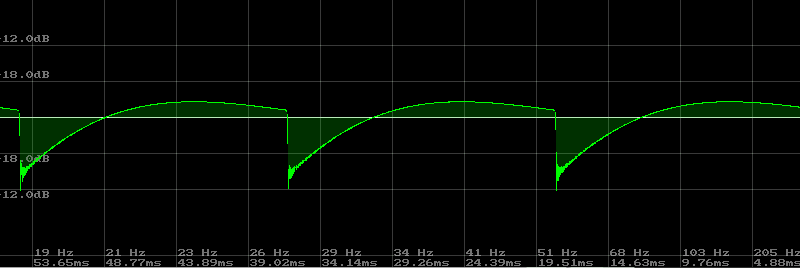
The sample below shows the sound when OSC1 is set to A1 (55Hz) as a sawtooth wave and OSC2 is set to A3 (220Hz) as a sawtooth wave, raising the pitch from A1 (55Hz) to A3 (220Hz) as a sawtooth wave.
RING MOD (Ring Modulation)
Ring modulation is a classic modulation method that has been around since the heyday of analog synthesizers and has been used when active overtones are desired. In principle, by multiplying two signals, the sum and difference frequencies can be output. The higher the harmonics are included in the input signal, the more ambiguous the pitch sense becomes and the more metallic the sound becomes.
For example, if OSC1 produces a sine wave of 440 Hz at A4 and OSC2 produces a sine wave of 659 Hz at E5, the calculation is as follows. The point is that the original 440Hz and 659Hz have disappeared. If you swap the frequencies of OSC1 and OSC2, the result will be the same. The result is a sum and a difference, but what I am doing is multiplication, so it will be the same if we swap them.
440+659=1099Hz
659-440=219Hz

The above frequencies are set to OSC1 and OSC2, with RING MOD turned up. The spectrum analyzer shows the following.
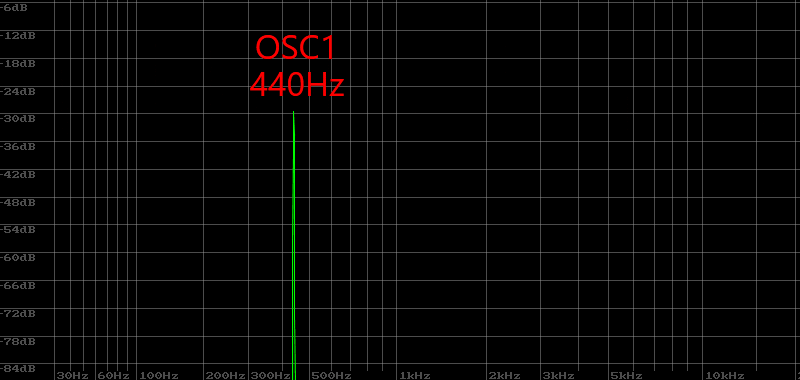
Ring modulation was often used in early analog synthesizers to create metallic sounds. I made a sample with a simple metallic sound.
FM
The Filterscape VA has a simplified but capable FM synthesis of two operators with OSC2 being the carrier and OSC1 being the modulator. Although not as complex as the DX7 with its six operators, the principle itself is the same. However, FM is digital, so the fold-back is both a drawback and a feature. Analog synths, on the other hand, do not experience fold-back. At u-he, they call the digitally folded version FM and the analog non-folded version cross modulation.

Filterscape VA is FM, so you can confirm that it folds back by observing it with a spectrum analyzer. You can see it clearly if you set OSC2 to sine and OSC1 to sawtooth, etc. However, it is not strongly modulated, so it is kept within a user-friendly range. It is like a quiet FM.
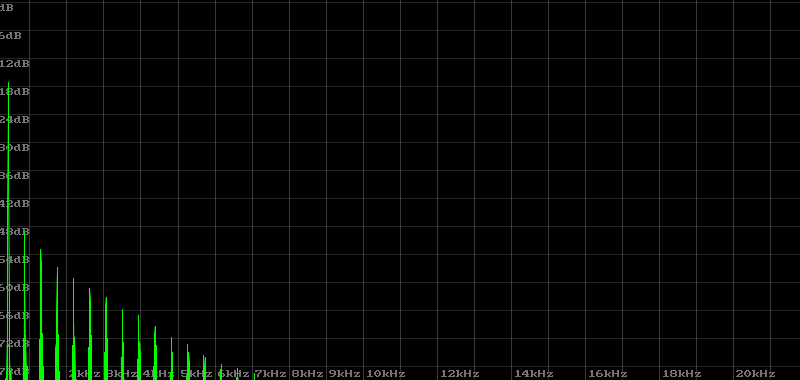
Speaking of FM, FM Piano is well known. I tried to make it with Filterscape VA, though I had to force myself to do so.
In the next article, I would like to explain the EQ, which is the greatest feature of Filterscape VA.
The “sound & person” column is made possible by your contributions.
For more information about submissions, click here.









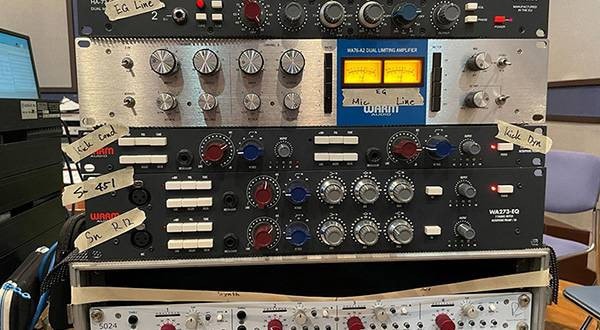


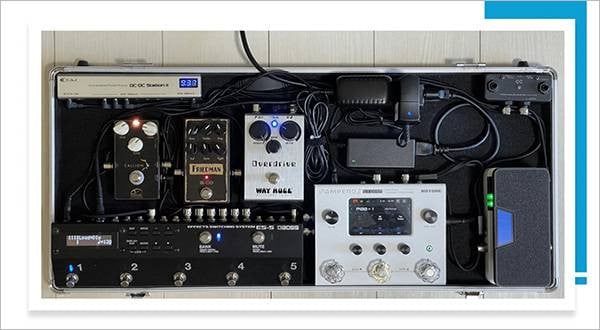
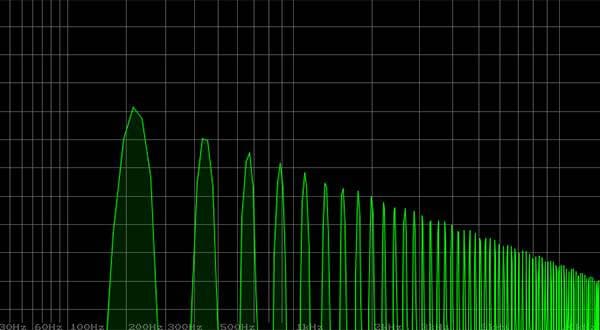

![Enchanting Instruments 63 - Electronic Sound Source Mechanism 3: Analog Synthesizer [Subtractive Synthesis]](/contents/uploads/thumbs/5/2023/5/20230509_5_22461_1.jpg)

![[2025 Latest Edition] Choosing a Synthesizer/Popular Synthesizers Ranking](/contents/uploads/thumbs/2/2022/9/20220916_2_19446_1.jpg)

 シンセサイザー 入門ガイド
シンセサイザー 入門ガイド
 DTMセール情報まとめ
DTMセール情報まとめ
 USB接続MIDIインターフェイス
USB接続MIDIインターフェイス
 USB接続対応のMIDIキーボード
USB接続対応のMIDIキーボード
 DTMに必要な機材
DTMに必要な機材
 DTM・DAW購入ガイド
DTM・DAW購入ガイド

